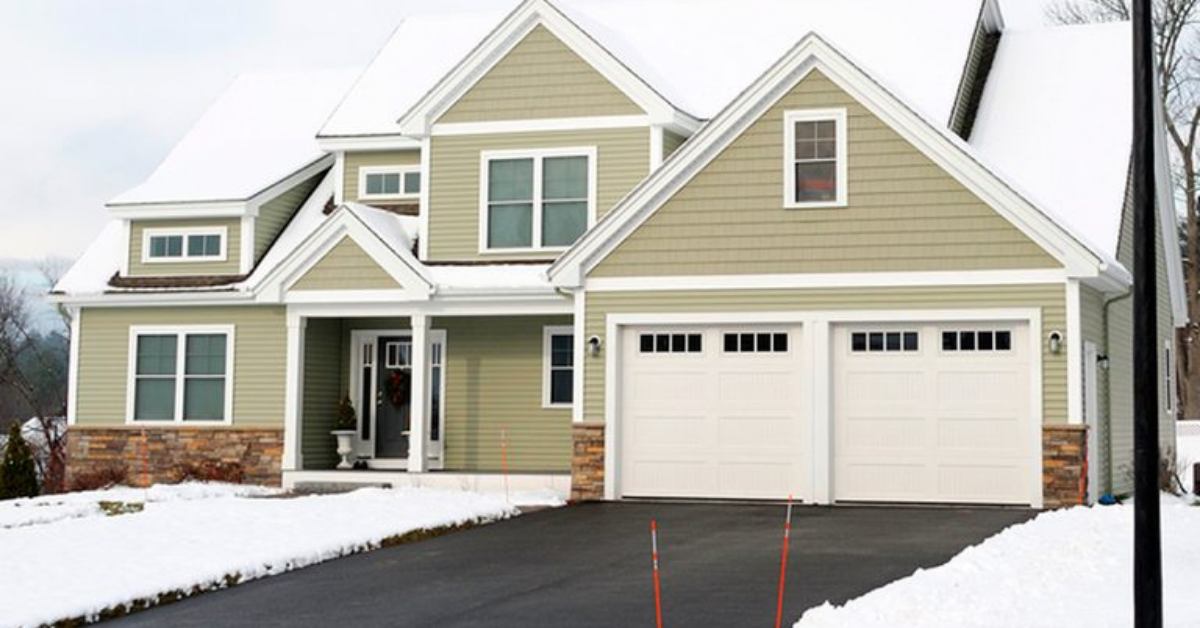
Heated driveways aren’t the exclusive, expensive home investment people think they are. These systems work on principles that are millennia old, but their rarity even in this age of modern convenience unduly puts them off the radar of many homeowners.
The major expense in installing a heated driveway isn’t the system itself but the removal of your current driveaway and the installation of the new one. If your pavement is ready for replacement, adding a radiant heating system for melting snow may be more affordable than you think. And many years of not having to shovel is worth something, too.
Main Types of Systems: Electric vs. Hydronic Heated Driveways
Heated residential driveways mostly come as either pure electrical systems which use a series of corrosion-resistant mats and cables to heat pavement, or hydronic systems which use resilient tubing filled with an antifreeze solution that circulates through a boiler (which is often installed in the garage).
The meltwater then flows to a specific drainage system or, increasingly, seeps into the ground via environmentally friendly permeable pavement, which has many benefits (including cost).
Pros and Cons of Electronic and Hydronic Heated Driveways
As with anything, there are benefits and drawbacks to each. Electric systems are cheaper to install and maintain but can be more expensive to run, while hydronic systems are more expensive to install, slightly more expensive to maintain (the boiler should be inspected annually), take up a bit of space if installed in a garage, but are cheaper to run. Hydronic systems can also make use of other energy sources like gas or propane, which means if your power goes out you can still keep your driveway ice-free.
No matter what you choose, it’s critical to make sure it’s safely integrated into your home’s electrical system. Before installing a heated driveway, contact a professional electrician to ensure your electrical panel can safely accommodate the extra energy demand.
Costs
The national average of heated driveway installation is $3,900, but those costs vary according to size, materials, and heating systems. Energy costs can range anywhere from $120 to $600 a season, with electrical systems skewing toward the high end of that range compared to hydronic systems.
As mentioned earlier, the biggest cost associated with heated driveways is the expense of removing and installing new pavement. Homeowners looking to save money can find an opportunity here, as removal of the existing surface is a fairly straightforward DIY project.
It’s generally not recommended to install a radiant heating system under a surface that’s relatively new, as installing the system and repaving often forfeits the warranty — most radiant heating equipment is only guaranteed when it’s installed simultaneously with a new driveway. The loss of warranty, along with the expense of resurfacing, makes a strong case for waiting until your pavement’s reached the end of its lifecycle.
Once installed, heated driveways can last as long as the life of the pavement itself — anywhere from 15 to 20 years or longer. That’s a lot of time saved by not having to dig out your car every time it snows. It may also free you from the expense and environmental impact of other equipment, like gas-powered snow blowers and rock salt.
Can Heated Driveways Keep Up During Heavy Snowfall?
Yes. These systems are popular in some of the coldest, snowiest climates on Earth, where the use of radiant heating extends into public spaces: heated sidewalks and roads are plentiful in parts of Russia, Canada, Northern Japan, and all of the Scandinavian countries. Predictably, energy methods vary with location, some use heated steam while others rely solely on geothermal, but the principles are identical.
For our purposes here in New England, heated driveways can melt about two inches of snow an hour and will continue to do so until the slush is gone. The system continues to work until any threat of ice is gone — again, opting for a permeable surface greatly speeds up the system’s ability to remove water.
Save your back, free up space in your garage, increase your home’s value, and do a little something for the environment by investing in a heated driveway. It may cut into the profits of the neighborhood kids, but any pangs of guilt you may suffer over bilking young entrepreneurs will immediately melt away when the first big snow falls.

